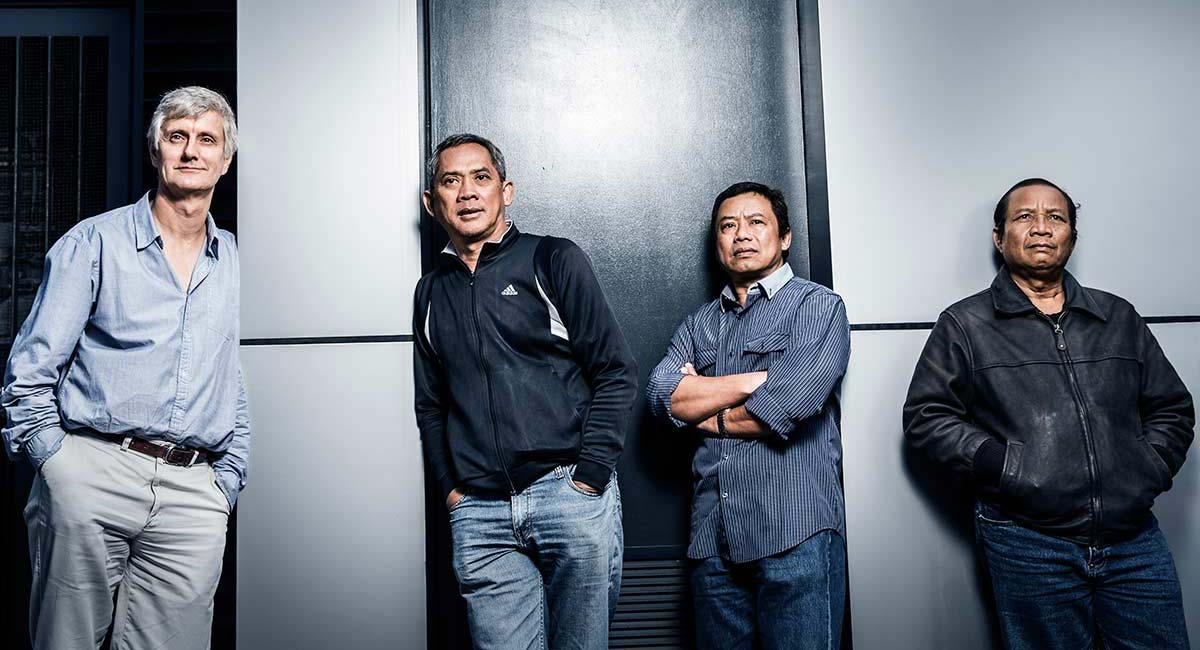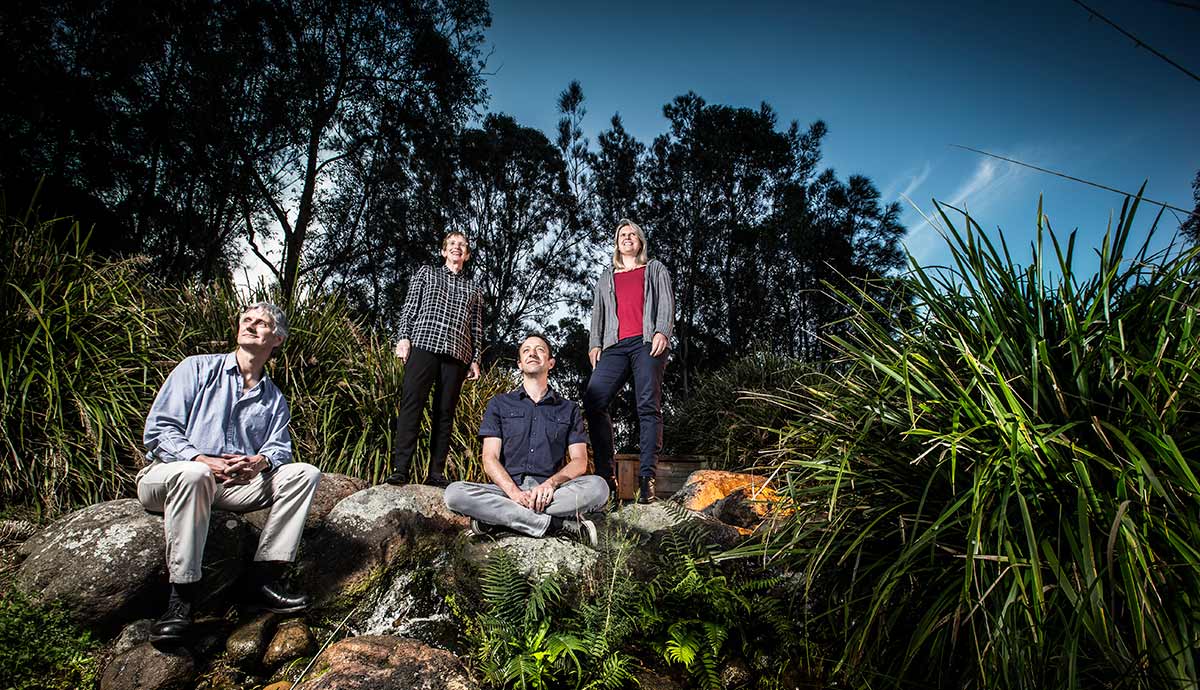September 8, 2016
Australia’s human and environmental history the focus of a national research centre
UNIVERSITY OF WOLLONGONG TO LEAD NEW ARC CENTRE OF EXCELLENCE FOR AUSTRALIAN BIODIVERSITY AND HERITAGE
The University of Wollongong (UOW) will lead researchers from around the world on a seven-year, $45.7-million research quest to investigate the beginning of Australia's unique biodiversity and Indigenous heritage, while inspiring Australian children to engage with science.
Announced today (8 September) by the Minister for Education and Training, Senator the Hon. Simon Birmingham, the Australian Research Council (ARC) Centre of Excellence for Australian Biodiversity and Heritage will bring together 20 institutions and museums worldwide to unlock the history of Australia, Papua New Guinea and eastern Indonesian from 130,000 years ago until the time of European arrival.
The first of its kind in the world, the Centre will encourage budding young scientists through a unique outreach program at schools and museums throughout Australia, and will focus on nurturing the careers of Indigenous and female researchers.
Centre Director, Distinguished Professor Richard (Bert) Roberts, an ARC Laureate Fellow and the Director of UOW’s Centre for Archaeological Science, said Australia’s environmental history and Indigenous heritage are fundamental to understanding the story of human dispersals, adaptions to changing environments and interactions with the past landscapes and ecosystems.
“Australia boasts an array of fauna and flora that exists nowhere else on Earth,” said Professor Roberts.
“It has some of the world’s most ancient landscapes and deeply weathered and depleted soils, and is home to Indigenous peoples whose genetic and cultural history extends back tens of millennia.
“But we still do not have answers to some of the most fundamental questions about this continent or its inhabitants, such as when people arrived in Australia, their routes of colonisation and subsequent dispersal, the timing and extent of major changes in climate and fire regimes, or how landscapes, plants and animals responded to the altered conditions.”
The Centre, which will open in 2017 and run for seven years, will be funded by a $33.75 million grant from the ARC, $1 million from the NSW Government, and $11 million from participating universities, museums, and organisations.
It will comprise seven Australian universities – UOW, James Cook University, the University of New South Wales, the Australian National University, the University of Adelaide, Monash University and the University of Tasmania – together with leading organisations in public education and engagement, including the Australian Museum, Queensland Museum, South Australian Museum and the State Library of New South Wales.
The Centre represents a unique integration of multidisciplinary expertise, bringing together researchers from science, technology, engineering and mathematics disciplines – including Earth and climate sciences, ecology and genetics – with scholars from humanities and social sciences, such as archaeology, and Indigenous and museum studies.

Photo (from left to right): Professor Richard (Bert) Roberts, Jatmiko (no surname), Thomas Sutikna and Wahyu Saptomo.
The funds will support around 40 new research positions and more than 50 new research students over the life of the Centre.
Professor Roberts said new insights from archaeology, palaeoanthropology, genetics, ecology, Earth sciences and climate science will transform our knowledge of past environments and human activities in Australia and the neighbouring regions to our north, which were joined to Australia by a land bridge for most of the last 130,000 years.
“By filling these vast gulfs in our knowledge, we will be better able to predict the responses to future environmental changes and the knock-on effects for biodiversity and Indigenous heritage, and so protect our precious national assets. To adapt successfully to future challenges, we must dramatically improve our understanding of Australia’s past,” Professor Roberts said.
A comprehensive program of education, outreach and science communication events is planned for schools, museums, science festivals and a range of digital media, to bring the extraordinary environmental and human history of Australia to the public.
UOW Professor Amanda Lawson, a Deputy Director of the new Centre, said it would bring educational materials about their research into Australian schools.
“We aim to inspire all Australians young and old, including in the regional communities where the research will be conducted, in the processes and excitement of scientific discovery,” Professor Lawson said.
“Our partners include world leaders in public engagement, such as the Smithsonian Institution, the Natural History Museum in London and the Natural History Museum of Denmark.”
UOW Deputy Vice-Chancellor for Research and Innovation, Professor Judy Raper, hailed the announcement of the Centre as important recognition for UOW as an international leader in the natural and historical sciences.
“The increasing threats to Australia’s cultural heritage, landscapes and biodiversity are matters of pressing national concern,” Professor Raper said.
“We are delighted to be leading research so critical to Australia’s national identity.”
UOW has established itself as a global research leader in Earth and human history, with three of the Centre’s key researchers – geochronologists Professor Roberts and Professor Zenobia Jacobs and geomorphologist Dr Tim Cohen – based in the School of Earth and Environmental Sciences. UOW researchers played a key role in the discovery and dating of a new species of tiny human, Homo floresiensis – affectionately dubbed the ‘hobbit’ – on the Indonesian island of Flores.
The ARC Centre of Excellence for Australian Biodiversity and Heritage will be the second such Centre led by UOW. For the past 11 years, UOW Distinguished Professor Gordon Wallace has led the ARC Centre of Excellence for Electromaterials Science, in developing a new generation of bionic ears, artificial muscles, nerve repairs and the bio-batteries and bio-fuels that drive them.
The full list of participating organisations in the ARC Centre for Excellence for Australian Biodiversity and Heritage: UOW, James Cook University, University of New South Wales, Australian National University, University of Adelaide, Monash University, University of Tasmania, Australian Museum, Queensland Museum, South Australian Museum, State Library of New South Wales, Bioplatforms Australia and Scarp Archaeology (all based in Australia), University of Colorado (US), University of Savoy (France), Max-Planck Institute for the Science of Human History (Germany), Natural History Museum of Denmark, University of Papua New Guinea, Papua New Guinea National Museum and Art Gallery, and Indonesian National Research Centre for Archaeology. The Centre also includes other researchers from the University of Western Australia, Natural History Museum in London and – in the US – the Smithsonian Institution, Harvard University and the National Center for Atmospheric Research.
The ARC has also announced that UOW would be a partner in the new ARC Centre of Excellence in Future Low-Energy Electronic Technologies. Professor Xiaolin Wang from UOW's Institute for Superconducting & Electronic Materials (ISEM) will collaborate on the Monash-led project.
Lead photo (from left to right): Professor Richard Roberts, Professor Amanda Lawson, Dr Timothy Cohen and Professor Zenobia Jacobs.
